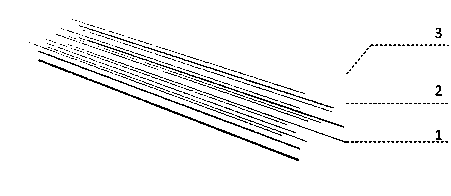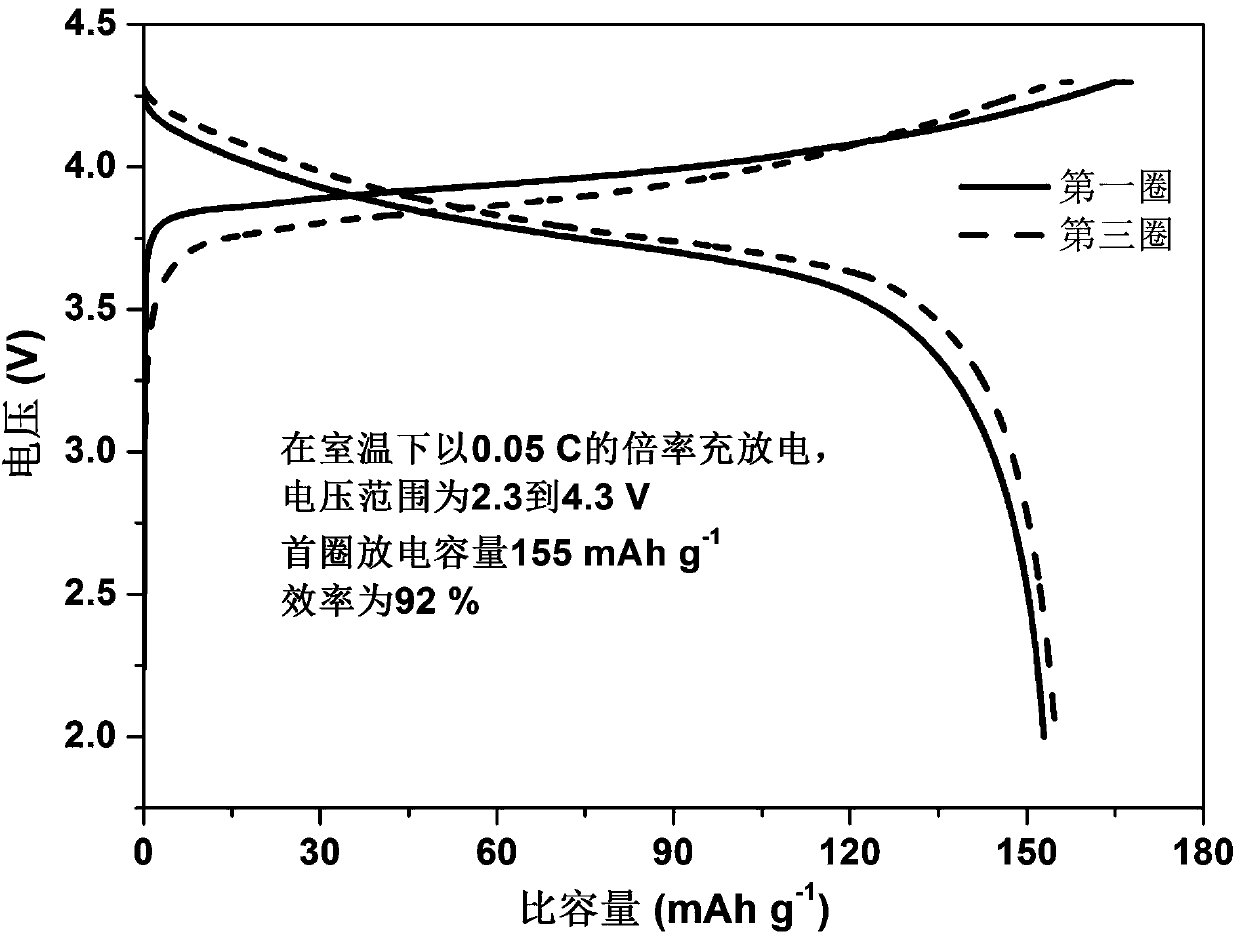Sulfide composite electrolyte with toughened polymer conductive fiber
A composite electrolyte and conductive fiber technology, applied in electrolytes, solid electrolytes, non-aqueous electrolytes, etc., can solve the problems of low fracture strength, poor comprehensive performance of organic-inorganic composite electrolytes, and poor mechanical properties
- Summary
- Abstract
- Description
- Claims
- Application Information
AI Technical Summary
Problems solved by technology
Method used
Image
Examples
Embodiment 1
[0023] Dissolve 1 g of polyimide and 0.2 g of LiTFSI in 10 ml of DMF, stir to dissolve completely. Move the solution into an electrospinning machine, and under the action of 30 KV voltage and gravity, the polymer is spun onto a collecting plate equipped with tiny electrodes, and after 60 seconds, the aligned one-dimensional nanopolymer lithium-ion conductive fibers are collected and transferred into the 80 °C vacuum oven dried. 1.9 gLi 3 P.S. 4 Disperse in 10 ml of toluene solution, scrape-coat it on a smooth aluminum foil, and move it into a vacuum oven at 80°C to dry. After drying, the one-dimensional nanopolymer lithium-ion conductive fibers are uniformly arranged in the same direction to the Li 3 P.S. 4 On, heat-compression compounding at 300°C. Repeat the above steps of scraping-arranging fibers-hot pressing to obtain a sulfide composite electrolyte toughened by polymer conductive fibers. The thickness of the electrolyte is 200 μm, and the lithium ion conductivity o...
Embodiment 2
[0025] 1 g polyetherimide and 0.2 g LiBF 4 Dissolve in 10 ml DMAC and stir to dissolve completely. The solution was filtered, defoamed, and 0.1 g min -1 The pump supply is wet spinning, and the spinneret with a diameter of 0.01 mm is selected. After solidification and stretching, it is wound and taken up by a winding machine to obtain a stable and continuous one-dimensional nanopolymer lithium ion conductive fiber. 1.9 gLi 6 P.S. 5 Cl was dispersed in 10 ml of toluene solution, scraped onto a smooth aluminum foil, and dried in a vacuum oven at 80°C. After drying, the one-dimensional nanopolymer lithium-ion conductive fibers are uniformly arranged in the same direction to the Li 6 P.S. 5 Cl, at 300 ° C hot-compression composite. Repeat the above steps of scraping-arranging fibers-hot pressing to obtain a sulfide composite electrolyte toughened by polymer conductive fibers. The thickness of the electrolyte is 200 μm, and the lithium ion conductivity of the electrolyte at ...
Embodiment 3
[0027] Dissolve 1 g of Kevlar and 0.2 g of LiBOB in 10 ml of DMAC, stir to dissolve completely. Scrape the solution on a polytetrafluoroethylene plate, dry it in a vacuum oven at 80°C, and crush it into a 100-mesh powder by ultra-cooling and low temperature. Adopt the melt spinning method, set the hot air temperature to 330°C, and the melt flow rate to 3.9 ml min -1 , the air pressure is 4 atm, the polymer is spun onto a collecting plate with tiny electrodes 15 cm away from the spinneret hole, and the aligned one-dimensional nanometer polymer lithium ion conductive fibers are collected, and then moved into a 60°C oven for drying. 2.2 g Li 3 P.S. 4 Disperse in 10 ml of toluene solution, scrape-coat it on a smooth aluminum foil, and move it into a vacuum oven at 80°C to dry. After drying, the one-dimensional nanopolymer lithium-ion conductive fibers are uniformly arranged in the same direction to the Li 3 P.S. 4 On, heat-compression compounding at 300°C. Repeat the above s...
PUM
| Property | Measurement | Unit |
|---|---|---|
| Diameter | aaaaa | aaaaa |
| Length | aaaaa | aaaaa |
| Thickness | aaaaa | aaaaa |
Abstract
Description
Claims
Application Information
 Login to View More
Login to View More - Generate Ideas
- Intellectual Property
- Life Sciences
- Materials
- Tech Scout
- Unparalleled Data Quality
- Higher Quality Content
- 60% Fewer Hallucinations
Browse by: Latest US Patents, China's latest patents, Technical Efficacy Thesaurus, Application Domain, Technology Topic, Popular Technical Reports.
© 2025 PatSnap. All rights reserved.Legal|Privacy policy|Modern Slavery Act Transparency Statement|Sitemap|About US| Contact US: help@patsnap.com


